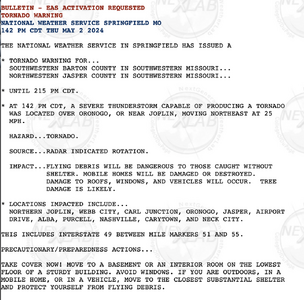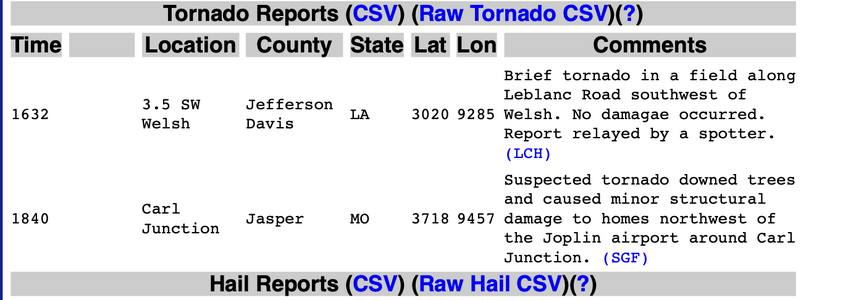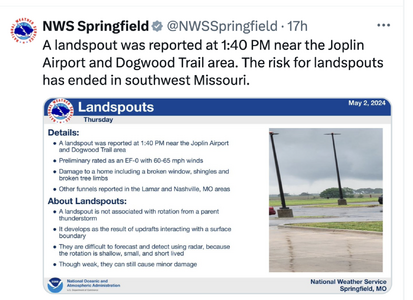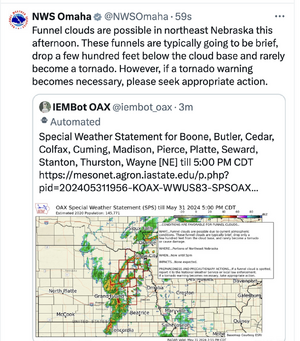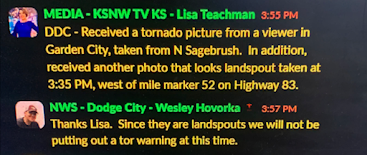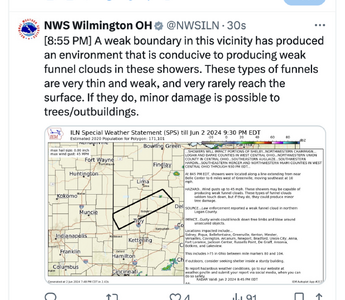Mike Smith
EF5
I started noticing television and NWS meteorologists mistakenly calling "regular" tornadoes "landspouts" a couple of years ago. Unfortunately, the mis-naming of landspouts has reached epidemic proportions. I posted a piece this morning, got to Kansas City this afternoon, turned on the TV (wanted to hear about JLN's tornado) and .... "landspout." Which is clearly was not.
Details here: To Meteorologists: Regarding "Landspouts" - [4:05pm, Addition]
And, unfortunately, given what happened in 2011 with the poor quality warnings that led to very many deaths, the tornado warning this afternoon came out after the tornado was in progress.
Details here: To Meteorologists: Regarding "Landspouts" - [4:05pm, Addition]
And, unfortunately, given what happened in 2011 with the poor quality warnings that led to very many deaths, the tornado warning this afternoon came out after the tornado was in progress.

